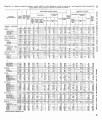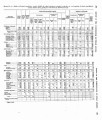| OCR Text |
Show 6 REPORT OF THE COMMISSIONER OF INDIAN AFFAIRS. sanatoria schools are for children in the incipient stage of the disease, and every time an advanced case is admitted to die some Incipient case is deprived of the opportunity to get well. None of the sanatoria are as well repared to take care of adults as they are of children. In the &st place, children have a much better , chance to recover and go out from the institution, leaving room for others. But adequate provision should be made for adults for, whether curable or incurable, they are, as a rule, a greater source of danger to the community than younger patients. A hospital school for crippled children is also a pressing need Many of these underprivileged ones are intelligent and ambitious, with undiminished longings for sympathy, encouragement, and the opportunity of self-expression, and for happiness. Their demand is not for charity but for an opportunity for an education that will make them producers, make them self-supporting instead of a bur-den to others. Their ambition is a right, not a privilega Proper hospital treatment, with vocational education, would fit them for use-ful careers. ACCO~~PLI~HXENThSea. -ltTh~ w~o rk of the bureau for the year has been successful notwithstanding a lack of funds. The Indians have held their own in life's battle. The number of births has exceeded the number of deaths, and the race is numerically a little stronger. Financial expenditures have been very guarded. Many thin s that should have been done have been deferred, but there has % een some expansion. A new 30-bed hospital has been con-strutted at Fort Hall, Idaho, and a building has been remodeled at Fore Belknap, Mont., for school and reservation hospital purposes. At the Soboba subagency, near San Jacinto, Calif., some of the buildings have been converted into a hospital plant for the Mission Indians; at Fort Apache, Ariz., a hospital has been opened in con-nection with the Theodore Roosevelt Indian Boarding School; at the Tongue River Agency, Lame Deer, Mont., plans have been made for remodeling a large residence into a hospital for the Northern Cheyenne Indians, Wyoming, and at White Earth, Cloquet, and Onigum, all in Minnesota, arrangements were perfected for the re-opening of hospitals lor the Chippewas. C~OPERATIONci.t-i~ng~ the accomplishments of the regular health personnel, mention should be made of the Red Cross nurses who have efficiently cooperated with us on the reservations at Pine Ridge, Rosebud, Jicarilla, Itfescalero, Zuni, Navajo, and in the jurisdiction of the two Pueblo agencies. Acknowledgment is also due the United States Public Health Service for helpful cooperation in the South- 1 west. PERSONNEL. During the war period and immediately following it was necessary to make numerous appointments of persons who did not, and could not, measure up to high standards of efficiency. A rapid elimination of these appointees has not been practicable, but gradual substitution has been effected and concerted effort has been made to select appli-cants who are suitably qualified for the positions sought, with the result that conditions have been much lmproved in the teaching service because of an ample eligible list. In other important call- |
























































